The Gospels are full of names of individuals associated with the central figure, Jesus of Nazareth , have been in contact:his ancestors to Abraham (Mt. 1 ); his brothers Jacobus , Joseph , Judas and Simon (Mc.6.3 ); other relatives, such as Joachim and Elisabet and her son, the later John the Baptist; his apostles, several of whom bear the name of their fathers; authorities such as Herod and his successor Archelaus , the governor Pontius Pilate , the high priests Annas and Caiaphas; Simon of Cyrene , who helps carry the cross and many people who have been healed by him or with whom he came into conversation. Even the owner of the tomb in which he was laid is mentioned by name, Joseph of Arimathea , “a distinguished counselor” (Mc. 15.43 ). As a result, Jesus' life is presented as a historical record, not as a mythical story. Thus dates Lucas 2.2 the birth in the time of emperor August “when Quirinius governor of Syria”. Even if this may not be historically correct, the intention is clearly historicizing. Women are also identified by their names, Elisabet, Marta , and various Marys, while in the Greek historical tradition the names of women are often withheld:even Plutarch could the mothers of Demosthenes or Alcibiades not find out.

In this painting by Ioannis Moskos (1711) an angel Dismas offers the wreath of the martyrs
Yet there are also many nameless persons whom Jesus encounters, such as the centurion, the Samaritan woman, the leper, the paralytic, the newlyweds from Canaan or the two murderers who were crucified next to him. In the Apocryphal tradition, which extends well beyond the Middle Ages (both in the East and in the West, names have been proposed for most of these persons, only a few of which have become widely known and have survived the centuries. murderer”, to whom Christ on the cross promises “yet today you will be with me in paradise” (Lk. 23.43 ) in the western tradition Dysmas (Dismas ), among the Copts Demas and with the Russians Rakh . He has even been canonized and he is the patron of prisoners, the repentant thieves and the undertakers. In the Catholic Church, his name day is celebrated on March 25.
Three Kings
The most famous anonymous figures from the New Testament are the “three kings”, also sometimes the “three wise men” or the “three magicians”/magi (derived from the Greek magoi ). Matthew , the only evangelist to mention the episode, presents them as follows:
After Jesus was born in Bethlehem in Judea in the time of King Herod, magi came from the east to Jerusalem and said, "Where is the son of the newborn king of the Jews?"
Guided by the star, the magi to the house - not to the stable, because apparently the family is now settled in Bethlehem - where the child is with his mother Mary . They worship him and offer their gifts:gold, frankincense and myrrh. Then they go back home and Joseph leaves after a dream with wife and child for Egypt (without worrying much about what happens next in Bethlehem).

The Adoration of the Magi, depicted on a sarcophagus in Rome
The oldest images of the three magi present them as young men in Persian caps, with their gifts and accompanied by camels. Names for the wise appear for the first time in the 6 de century AD in the Syrian tradition, where the three are also immediately called “kings”:Hormizdad , king of Persia, Izdegerd , king of Sabha and Perozad , king of Shaba in the East. In other Syriac apocryphal stories there are 10, 12 or 13 magi – Matthew does not give a number, only three gifts! – sometimes accompanied by 1000 soldiers. Also this magi are identified by all sorts of names (and even by the names of their fathers). In the Armenian church the twelve kings return, with yet other names and other countries.
Naming
The well-known names Balthasar , Melchior and Caspar /Gaspar appear for the first time in a Latin manuscript from circa 700 AD. (now in Paris), where they appear as Bthisarea , Melchior and Gathaspa . The current orthography is contained in the Liber pontificalis Ecclesiae Ravennatis II.2 (early 9 de century; critical edition in the Corpus Christianorum Continuatio Mediaevalis 199, 2006 ), where the author Agnellus offers a description of a scene in the Martinuskerk:
Gaspar offers gold in a blue robe, symbol of marriage, Balthasar offers incense in a yellow robe, symbol of virginity, Melchior offers incense in a multi-colored robe, symbol of penance. The three figures together symbolize the perfection of the Trinity.
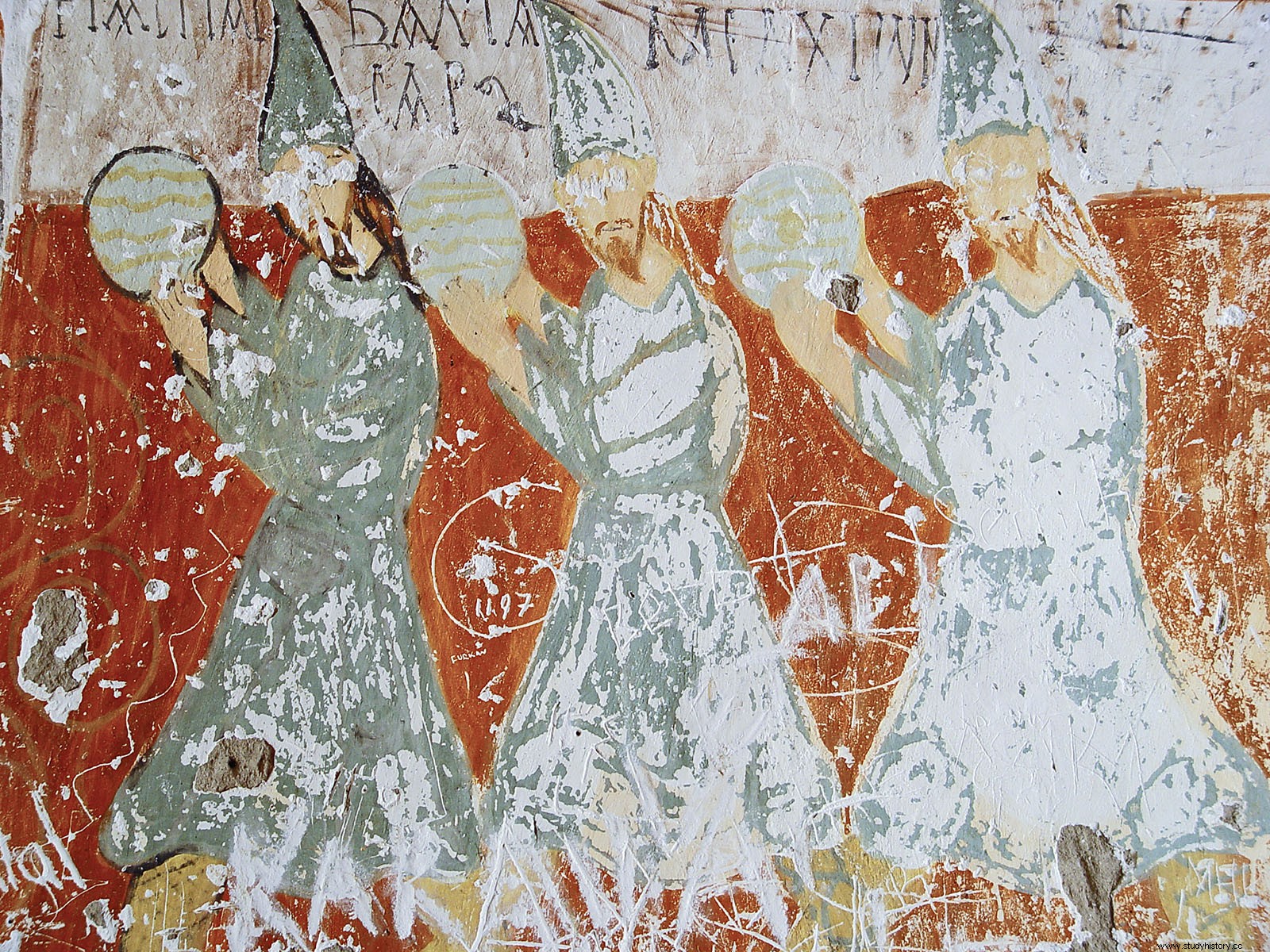
The three magi with their names in the Cappadocian rock church of Ağaçaltı
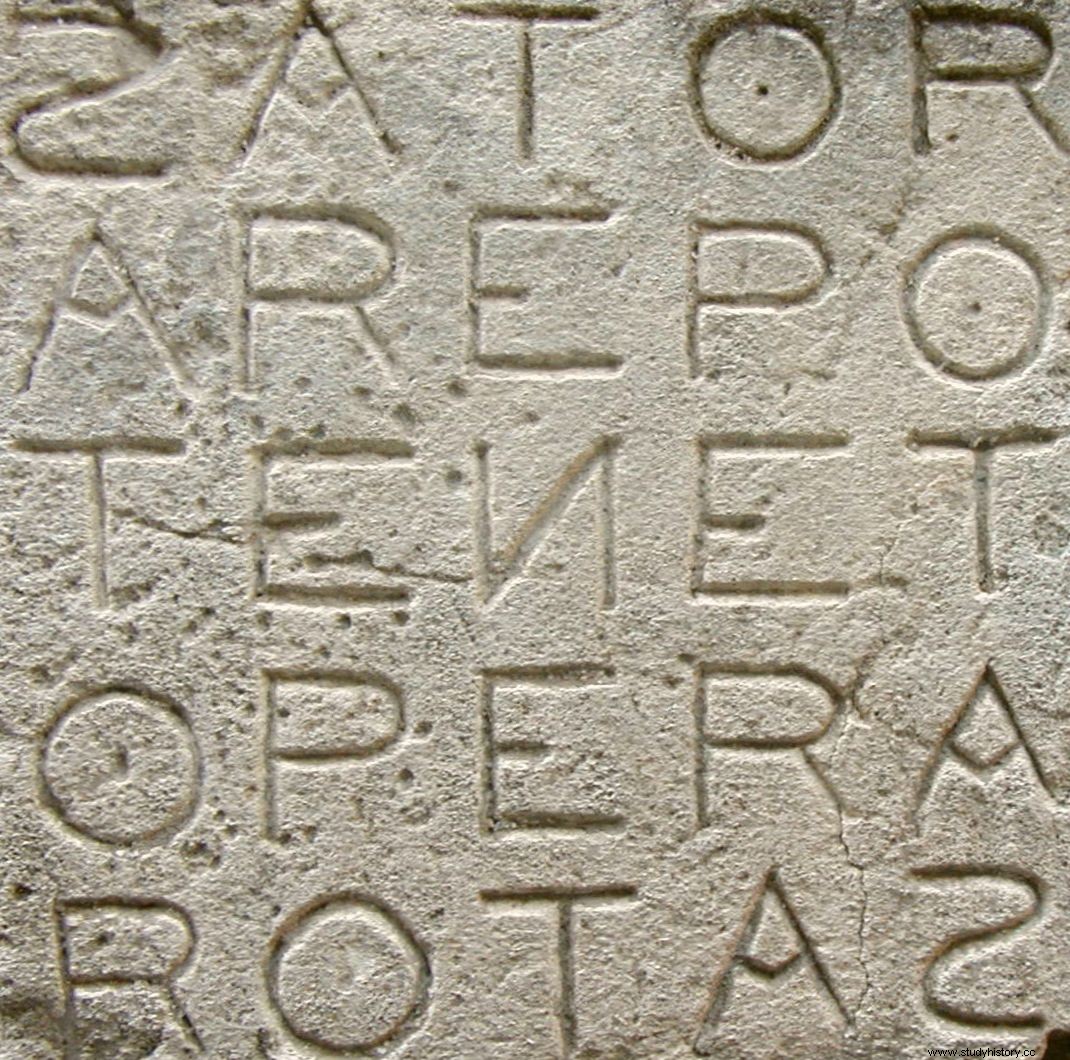
Sator square from Oppède
In one of the rock churches of Ağaçaltı in Cappadocia (9 de or 10 de century) the three appear as Melchion , Gaspar and Baltasar . In a few other Cappadocian rock churches, the shepherds are also given names (including Sator and Arepo ), which was taken from the 'Sator square' (a long palindrome, with the words SATOR, AREPO, TENET, OPERA and ROTAS), which was known well into the Middle Ages.

The three magi as depicted according to the Ethiopian tradition on a fresco in the church of Debre Berhan with the first letter of their names
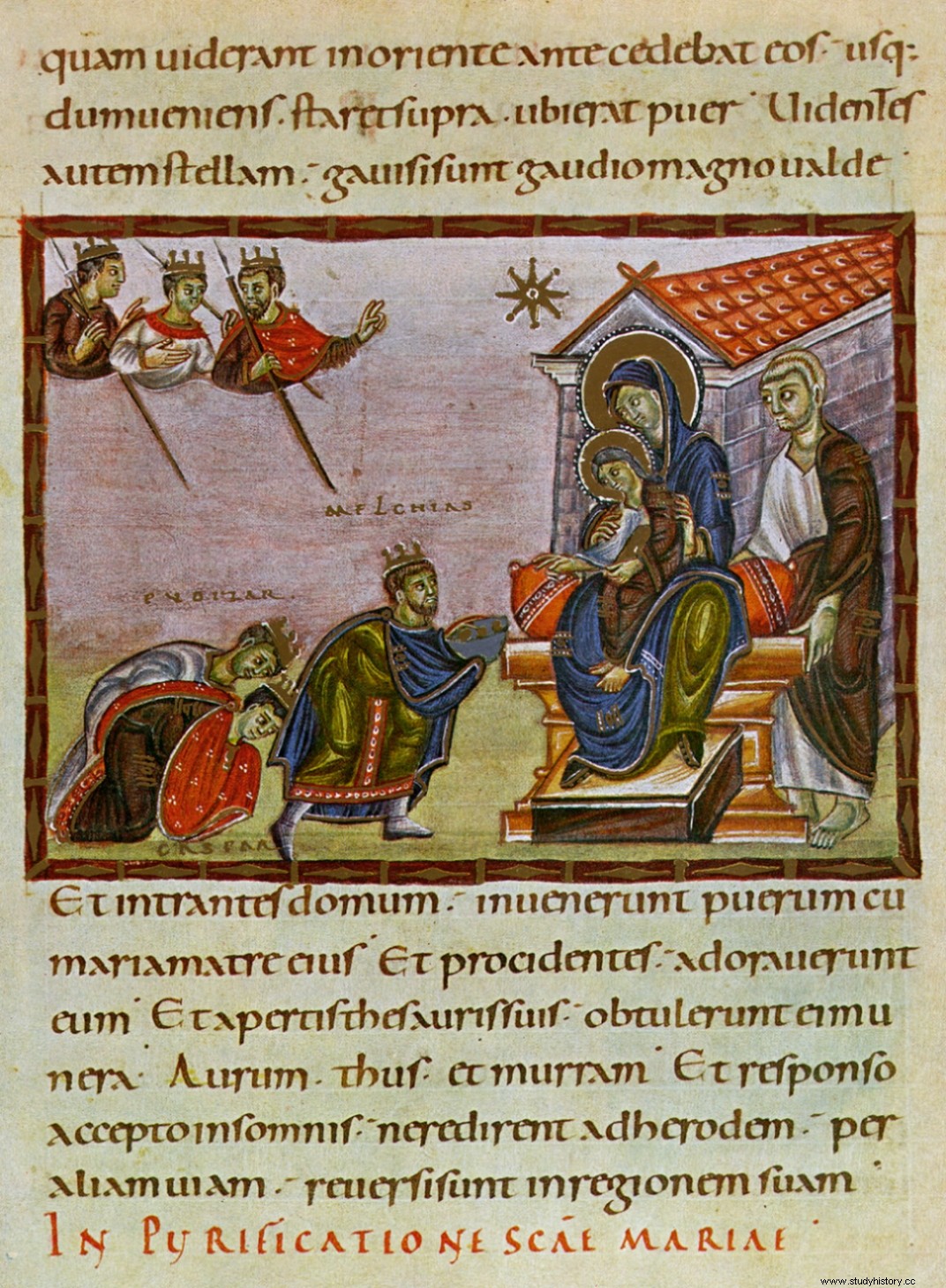
Codex Egberti
Other names also remain in circulation, such as Hor , Karsudan and Basanater in Ethiopia, Caspar, Melchias and Pudizar in the Codex Egberti van Trier (end 10 de century) or Ator , Sator and Peratoras at Casaubon (1655; again the 'Sator Arepo' theme). On an ostracon from the 7 de or 8 ste century, found in the Coptic town of Djeme, which was built within the temple of Ramses III on the western bank of the Nile opposite Thebes, they are represented as follows:
These are the names of the magi, those who came from the east:Bathezora was the one who brought the gold, Melchior brought the frankincense and Thaddias brought the myrrh.
Origin, occurrence and etymology
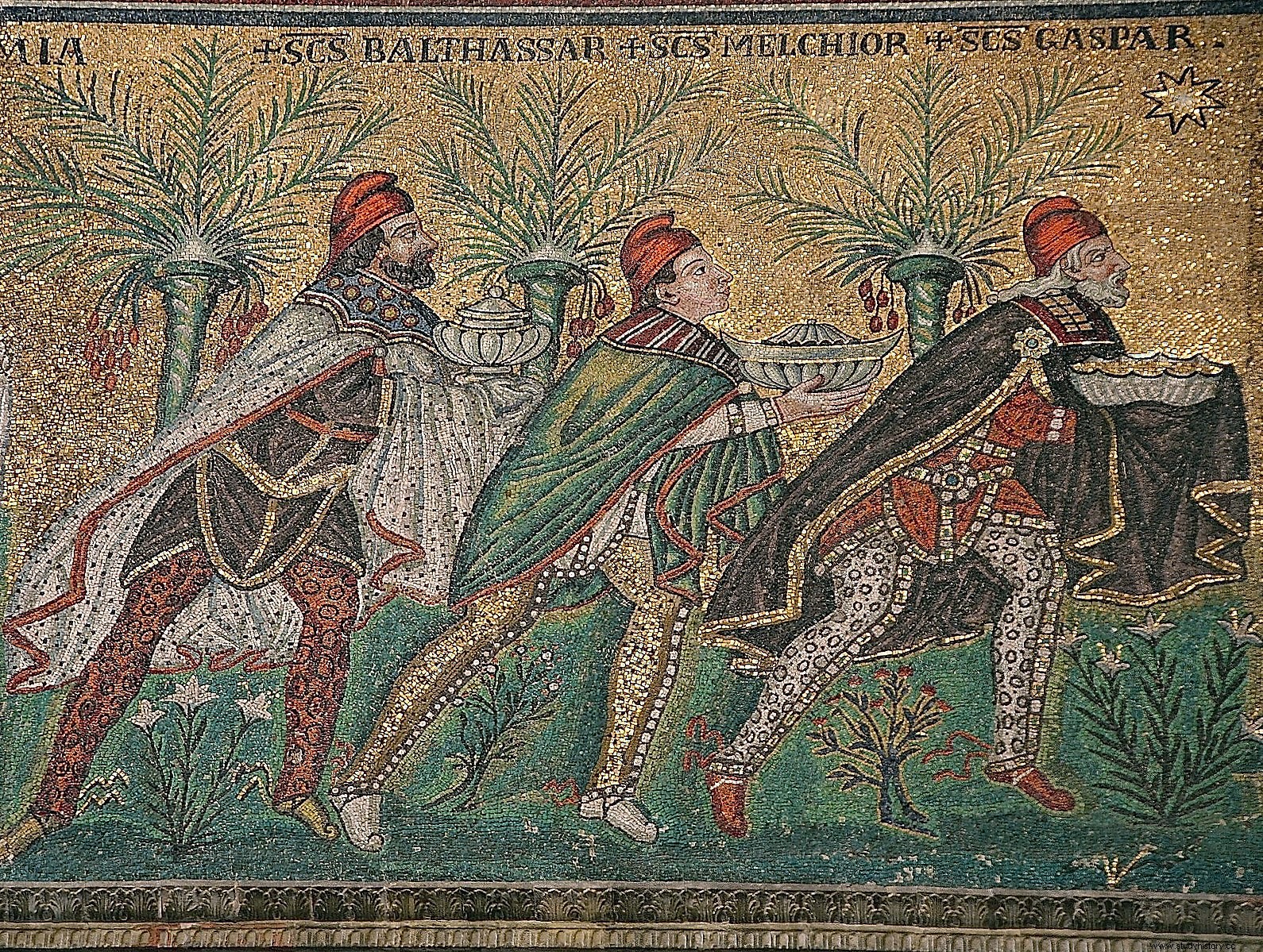
The three wise men in the Basilica Sant'Apollinare Nuovo in Ravenna

Mosaic in the church of San Vitale depicting the nameless three magi, on the mantle of Empress Theodora
A famous scene in Ravenna's Basilica Sant'Apollinare Nuovo shows the three, wearing colorful costumes (but not Agnellus's colors) and Persian trousers and hats, offering their gifts. Already here, in the 6 de century AD, they symbolize the three ages:Caspar has a gray beard, young Melchior is beardless, and Balthassar (sic) is a middle aged man with black beard. However, the names above their heads are only mentioned centuries later on the 6 de century mosaic added. In the San Vitale church a little further on, the three, with the same headgear, are depicted on the cloak of Empress Theodora , without names. In the Matthew commentary of Beda (first half 8 th century) they are already models for the three continents, Asia, Africa and Europe, i.e. all mankind descended from the three sons of Noah .
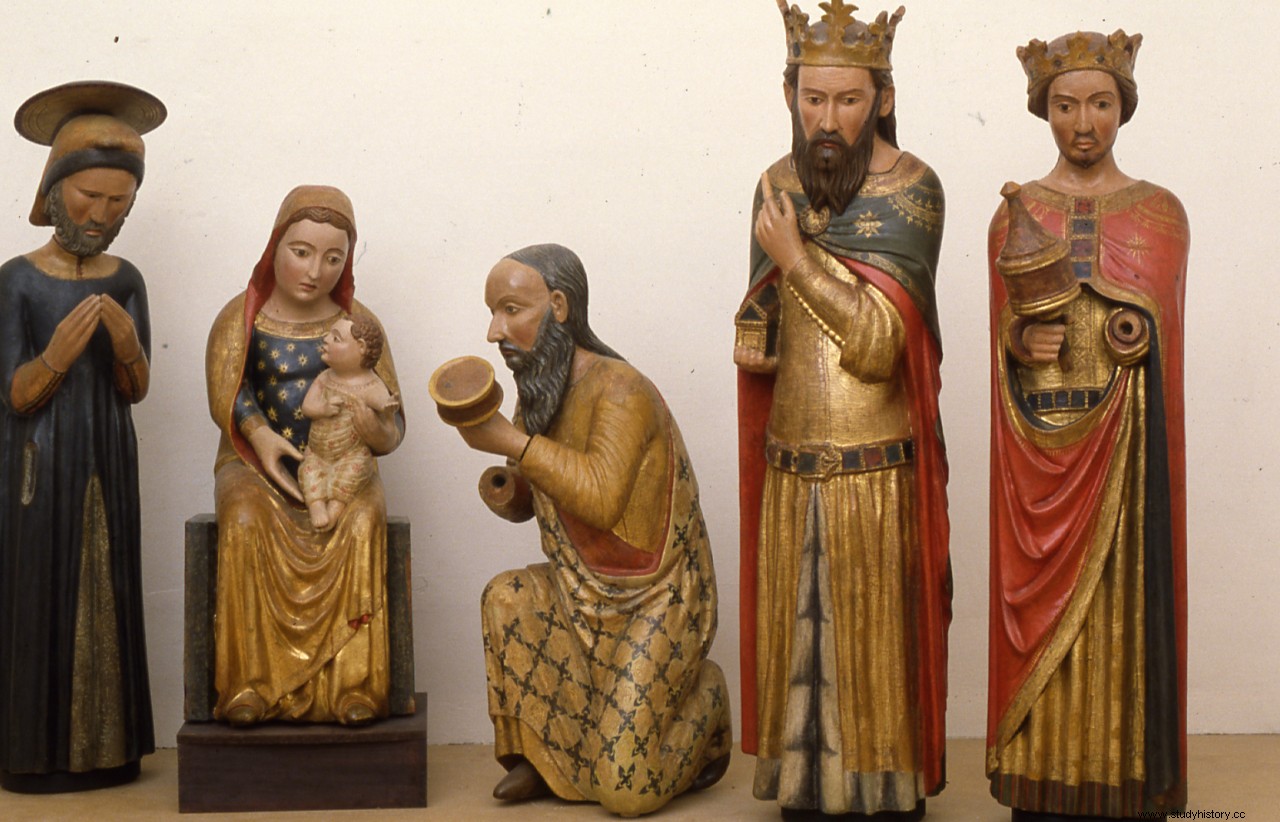
A Bolognese sculpture group
Matthew calls the three men “magoi “, a title for the Persian caste of priests of Zoroastrianism (named after the prophet Zoroaster /Zarathustra ). Those priests had adopted the Babylonian tradition of astronomy and were therefore the ideal persons to follow the movements of the star. Already around 500 AD. they are identified with kings based on a passus from Isaiah 60.3 and Psalm 72, who says that “all kings shall kneel before the messiah”. This is how they are depicted, with their gifts on a group of statues from the 13 de century in Bologna. This met sharp criticism from Calvijn , who, in his commentary on Matthew, calls it “a ridiculous invention of the Papists.” In the Renaissance and Baroque, the themes of the three ages and the three continents are combined in different ways.

The painting 'Adoration of the Magi' (1510-15), by Jan Gossaert (National Gallery, London)

One of the paintings entitled 'Adoration of the Magi' (1633-34), by Peter Paul Rubens (King's College Chapel, Cambridge)
The name Melchior clearly contains the Semitic root mlk (king), perhaps Hebrew melek awr (king of light); Balthasar was the name of Daniel at the Babylonian court in the Septuagint and one recognizes Baal in his name; Caspar may be a corruption of the Indian name Godaphar (Gundaphoros ).
Gold, frankincense and myrrh have been interpreted in many ways over the centuries. The Church Father Irenaeus of Lyon (c. 200 AD) briefly summarizes the traditional interpretation:gold for the king, frankincense for the priest (or for God), and myrrh for the one who would bring redemption through his death. The first two products also appear in a prophecy of Isaiah 60:6 , which says “all the people of Shaba will come with gold and frankincense”. Modern commentators also invariably refer to a Greek inscription from Didyma near Miletus, where king Seleucus I at the temple of Apollo in 288 B.C. vessels of gold and silver, 10 talents of frankincense and 1 talent of myrrh, as well as 1,000 sheep and 12 oxen (OGIS 214 =I. Didyma 19 [TM 642015]).
In 490 AD brought emperor Zenon the relics of the magi from Persia to Constantinople. Or, according to another story, it was Helena (Emperor's mother Constantine ) who brought the relics from India. In any case, at the end of the 6 de . they were century transferred to Milan, where they remained until Emperor Frederik Barbarossa donated them to the Archbishop of Cologne in 1164. They are still kept there in a magnificent shrine shaped like three sarcophagi.

The Epiphany Shrine in the Cologne Cathedral where the relics of the kings are said to be
Creative Apocryphal Tradition
In addition to creating names for the nameless characters, the Apocryphal tradition also sought to connect the different events of the New Testament. A wonderful example of the creative use of the Bible material can be found in the chapbook of a certain Johannes van Hildesheim (the Historia Trium Regum , published in Latin and subsequently translated several times into Middle Dutch). It relates to the gold Melchior offered to the Christ child:
When the holy family fled to Egypt, Mary put the three gifts in a cloth, but lost it on the way. A shepherd found it and took care of it until he heard of Jesus' miracles in Judaea. He was sick then and was healed by Jesus. He wanted to give him the cloth as a thank you, but Jesus had the gifts offered on the altar of the temple. The incense was burned by the officiating priest; the myrrh was made into a bitter drink, of which Jesus still drank on the cross and the rest was consumed by Nikodemos used for Jesus' burial; the pieces of gold were given to Judas by the high priest for his treason. When Judas regretted and threw the money at the feet of the high priest, fifteen pieces of gold were given to the soldiers guarding the tomb and with the rest a field was bought that served as a burial place for pilgrims.
